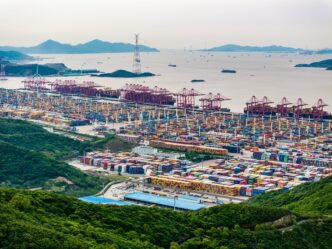President Donald Trump’s tariff policies are anticipated to slow economic growth in the United States and globally more than previously predicted, according to a report by the Organization for Economic Co-Operation and Development (OECD). The OECD forecasts a significant drop in the U.S. GDP growth rate, from 2.8% in 2024 to 1.6% in 2025, and further down to 1.5% in 2026. This decline is attributed to increasing trade costs driven by President Trump’s tariffs.
Global economic growth is also expected to decelerate, from 3.3% in 2024 to 2.9% in 2025 and 2026, falling below the consistent 3% growth seen since 2020. The OECD’s latest projections are more pessimistic compared to its March forecast, which anticipated a 2.2% growth rate for the U.S. economy and 3.1% global growth for 2025.
The tariffs imposed by President Trump on various countries have created uncertainty in global trade, potentially causing disruptions in supply chains that were already strained by the COVID-19 pandemic. The OECD warns that this uncertainty is likely to hinder business investments, and global trade growth may slow considerably over the next two years.
The future of these tariffs remains uncertain as legal challenges and negotiations continue. A recent ruling by the U.S. Court of International Trade briefly overturned the tariffs before a federal appeals court allowed them to remain in place. President Trump has also announced plans to double tariffs on aluminum and steel imports, which could escalate trade tensions further.
Increased trade costs from these tariffs may contribute to rising inflation rates, although weaker commodity prices might offset some of this impact. U.S. inflation, which peaked at 9.1% in 2022, decreased to 2.3% in April. Consumer confidence, another indicator of inflation, has improved for the first time in months.
Major retailers in the U.S. have responded to the tariff-related uncertainties by increasing product prices. Walmart, for instance, cited tariffs as a factor for its May price hikes following weak first-quarter results. Other companies, like Target, have also mentioned tariffs as one of several reasons for price adjustments, despite also facing other challenges such as declining consumer confidence and customer boycotts. Meanwhile, corporations like Nike attribute their pricing changes to regular market planning rather than solely to tariffs.








